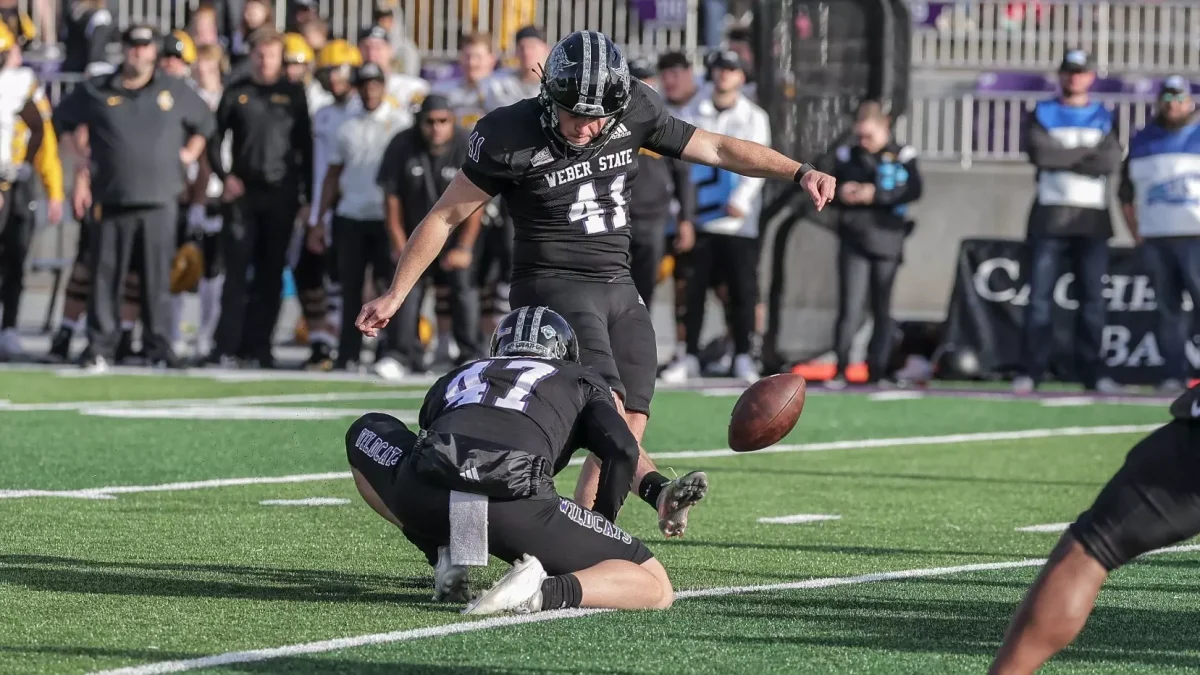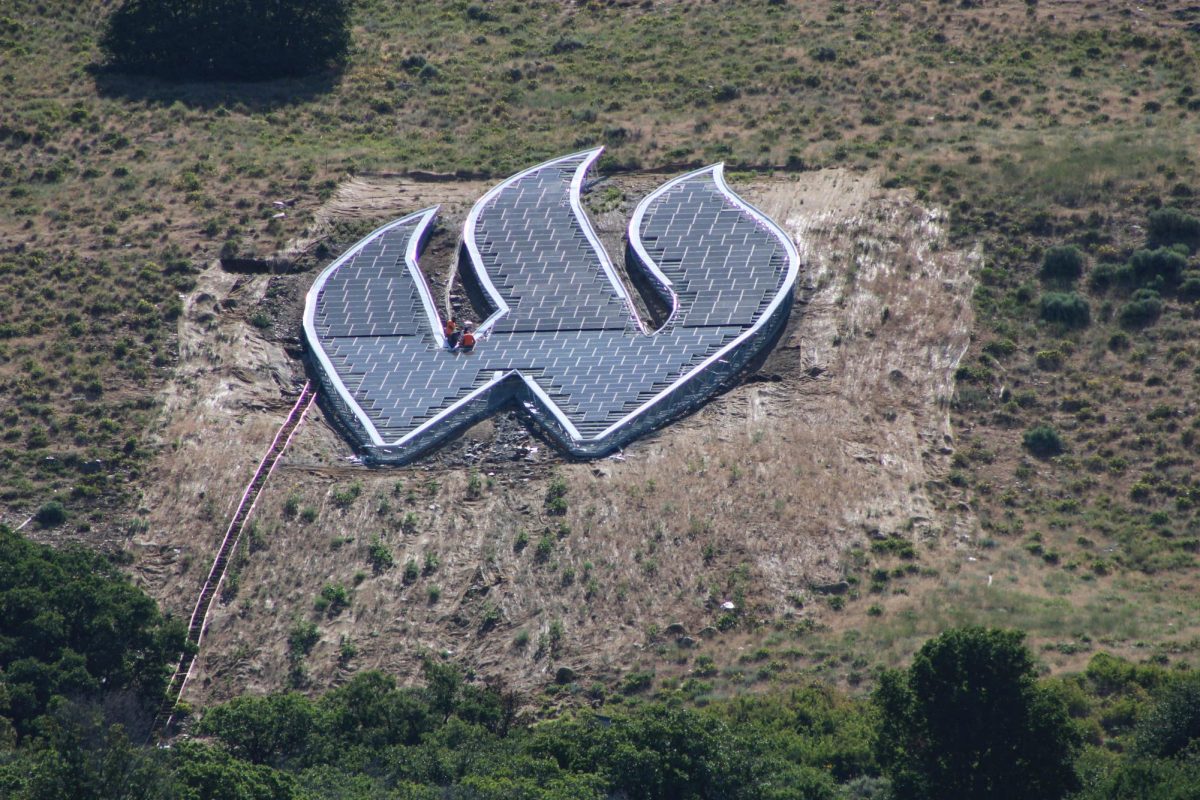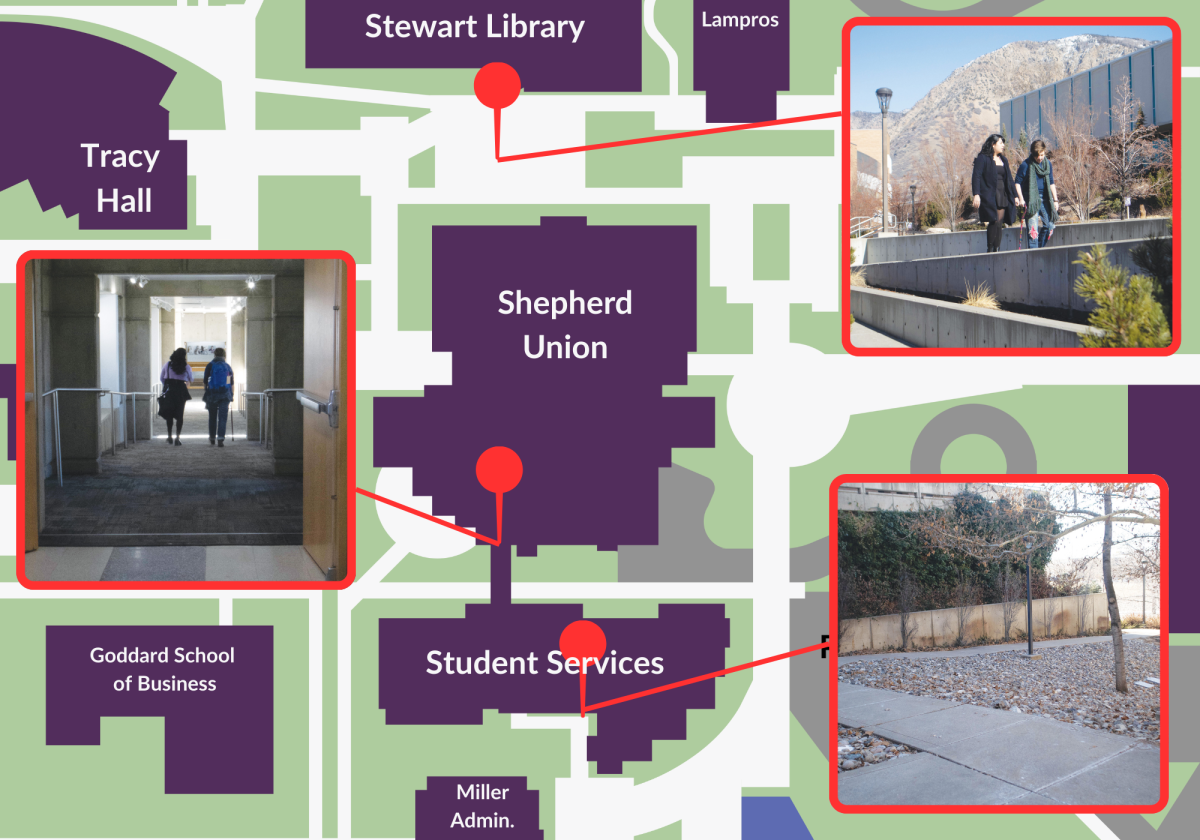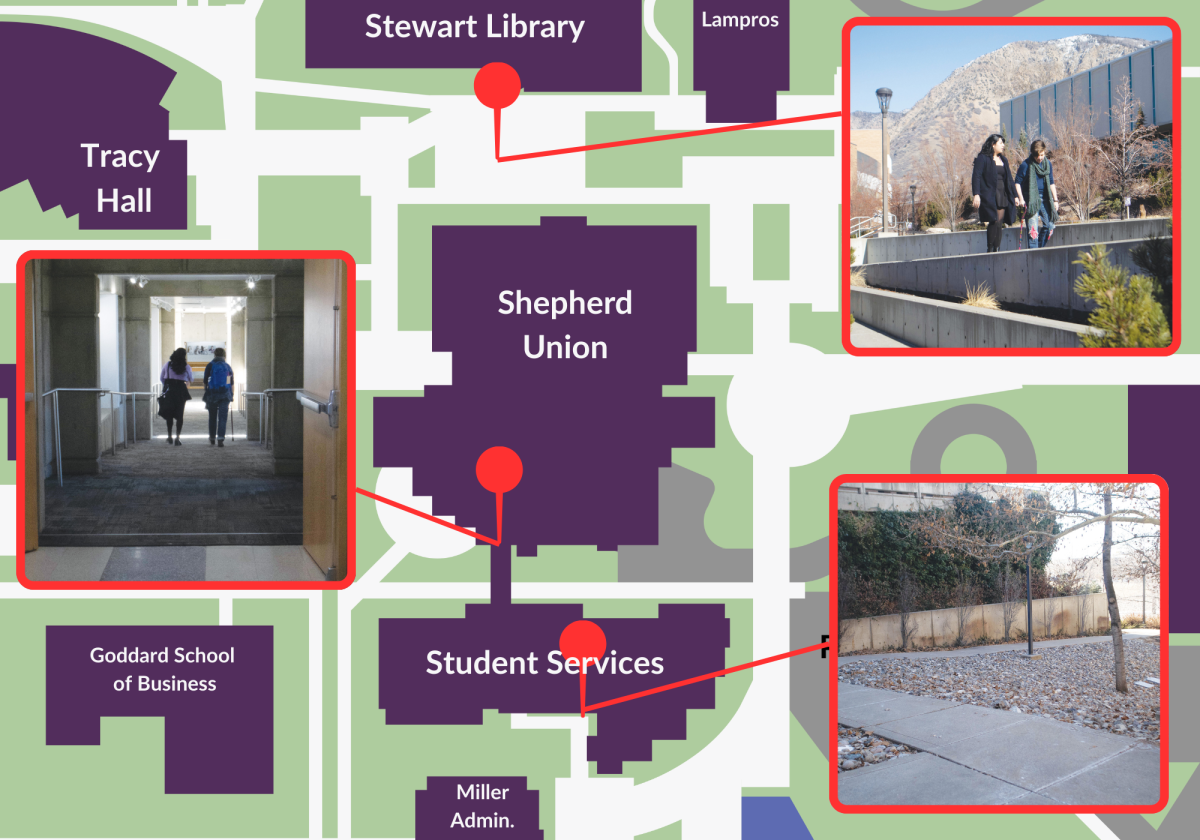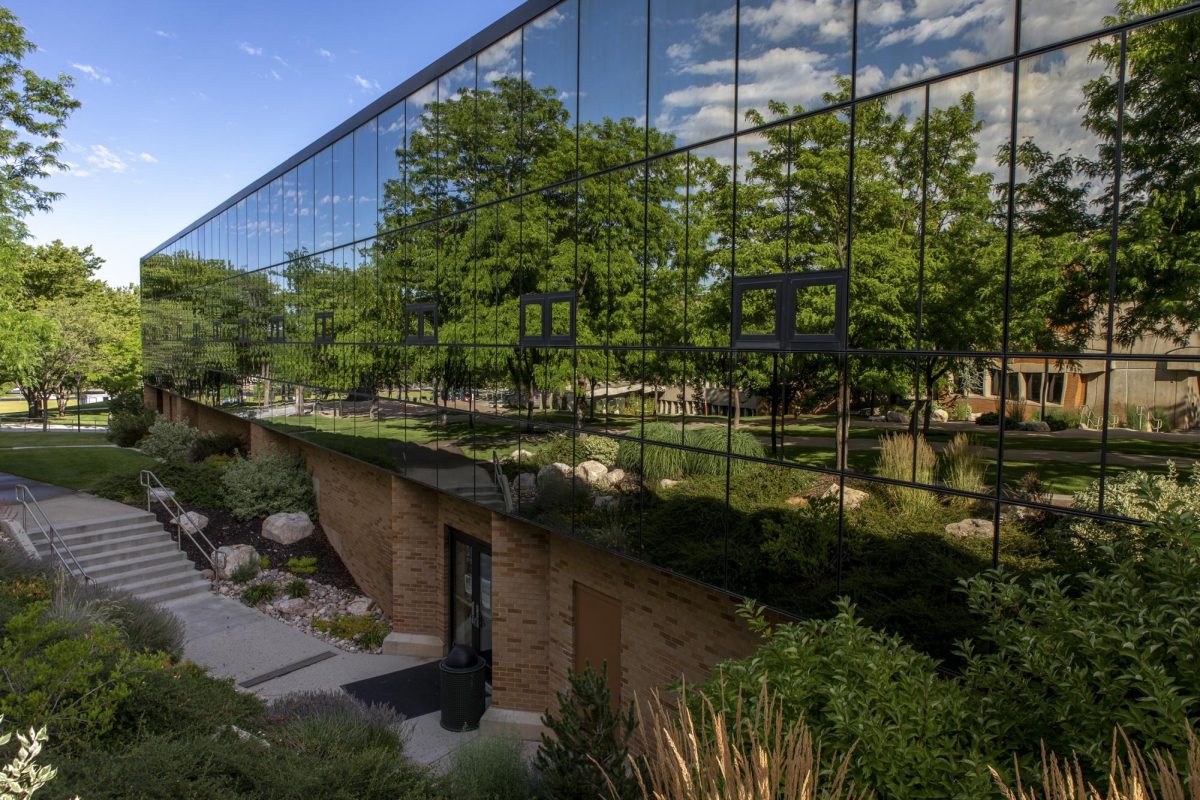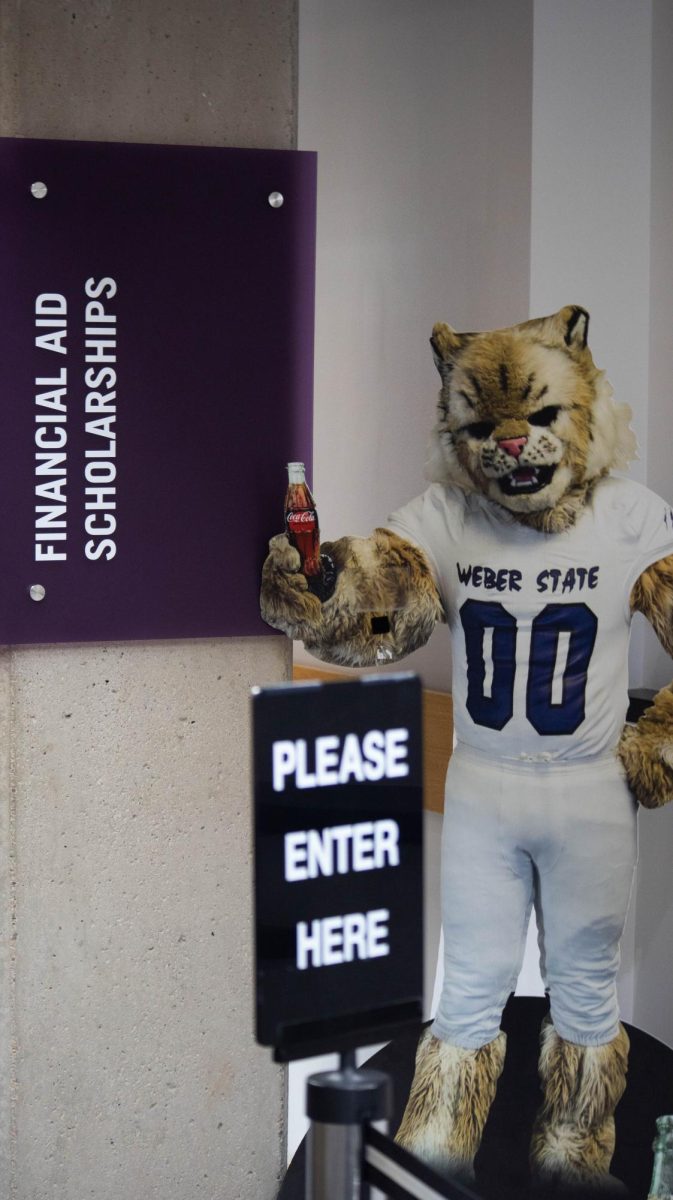Collaboration and choreography was the name of the game in Orchesis Dance Theatre’s fall 2018 production.
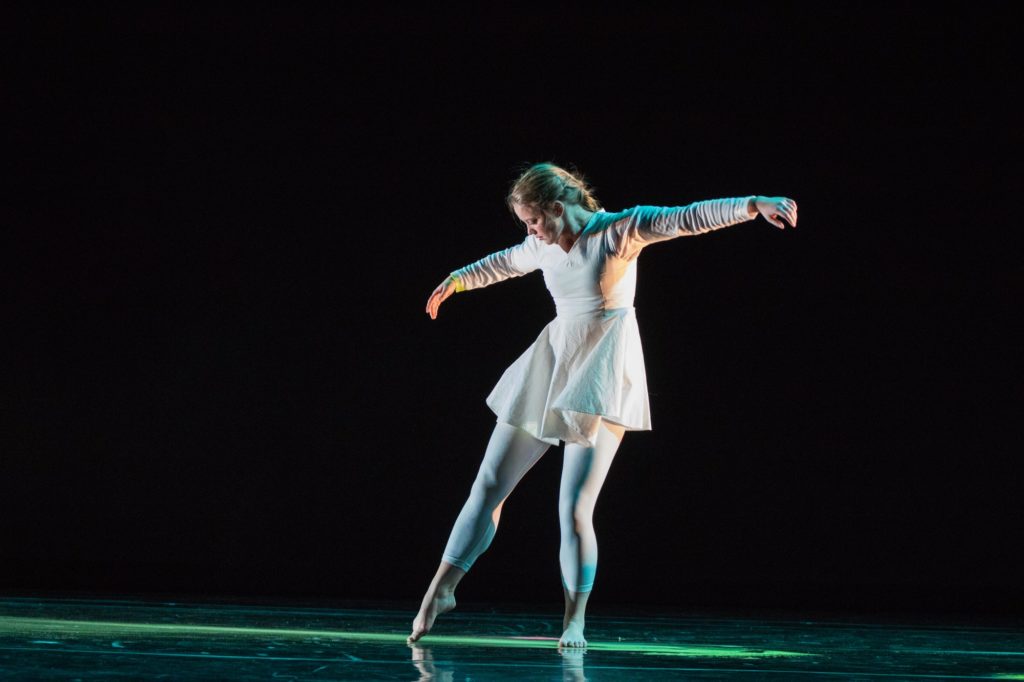
The production, which ran from Nov. 15-17, was a major collaborative effort between the dance, music and visual arts departments at Weber State University.
FORM was the brainchild of Amanda Sowerby, a professor of dance and the associate dean of WSU’s College of Arts and Humanities.
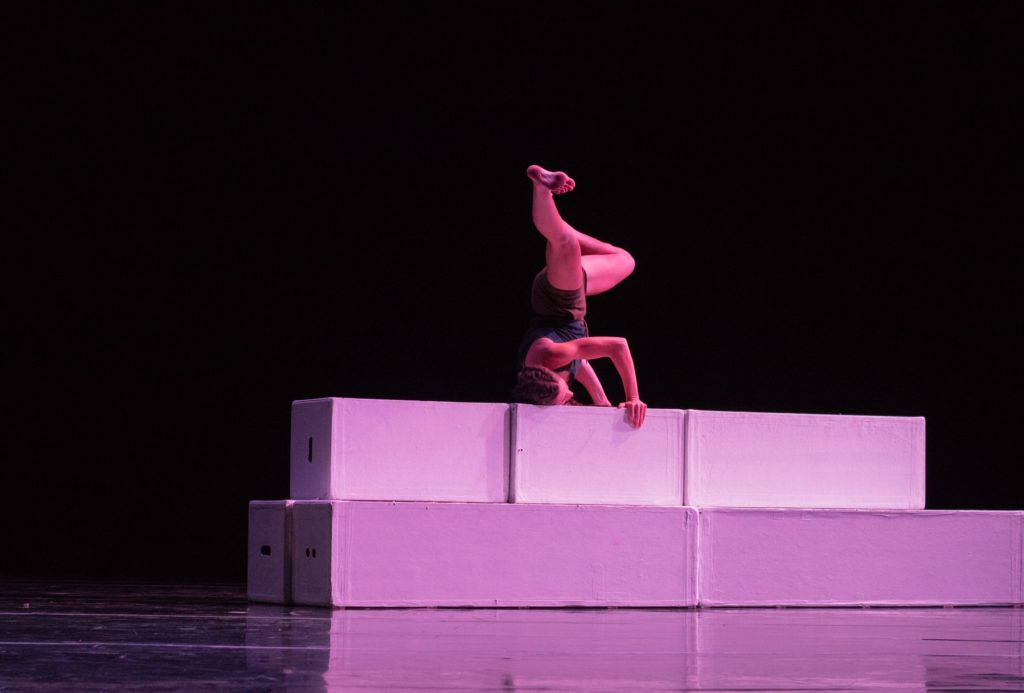
“I was inspired by the history, in modern dance, of collaborating with different artistic fields,” Sowerby said. “I reached out to Dr. Carey Campbell and Jason Manley, and they both agreed to come on board for this year’s Moving Company.”
Campbell, an associate professor of music at WSU, created and performed live electronic scores for the piece, improvising and generating soundscapes for the dancers in real-time.
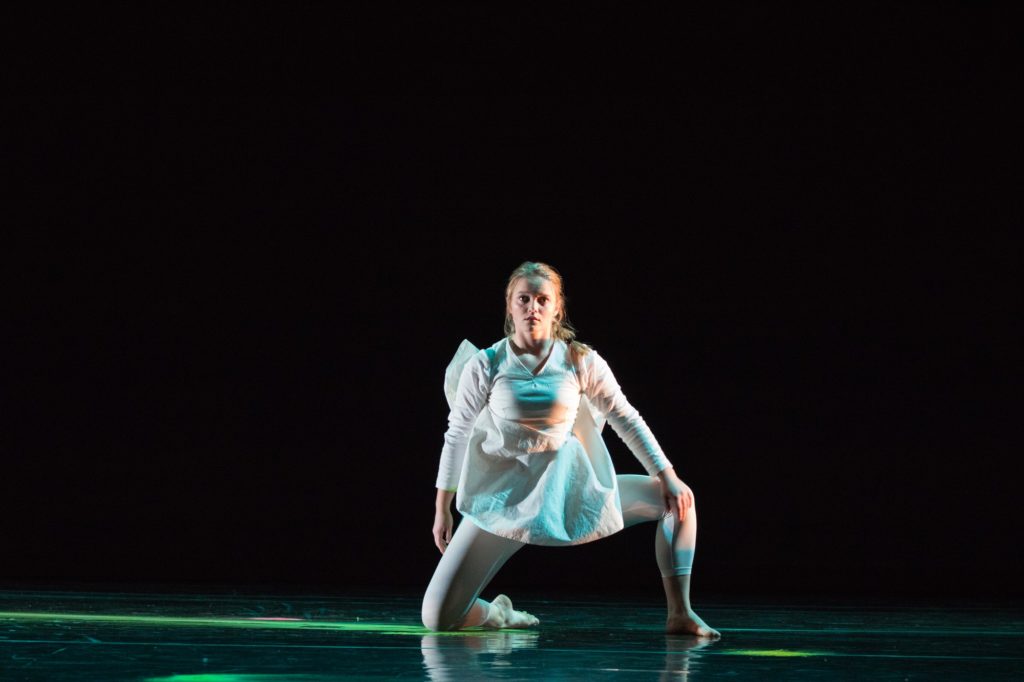
The sculpture work for the performance was done under the direction of Manley, an assistant professor of art at Weber State.
“(Manley’s) class created big sculptures that fly in from the flyrails and get wheeled out onto stage,” Sowerby said. “The dancers can get inside and on top of them.”

Uriel Castillo, a graphic design student, was one of the students who created a piece for the performance.
Castillo said he and his partner were given the name of the production as a prompt. They used that prompt to create nonrepresentational sculptures with which the dancers could interact.
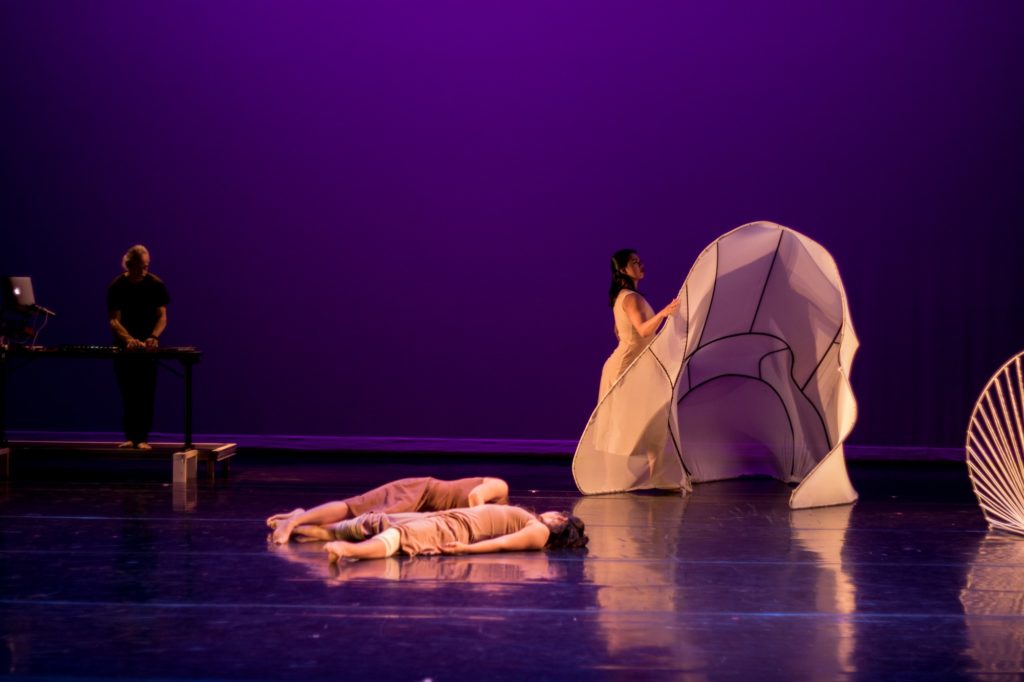
“We were trying to do an abstract shape and we ended up doing an organic cocoon-type thing,” Castillo said. “I originally had more of an idea of a belly button; it was like a wavy circle you could go inside of. You really have to see it.”
As collaborative talks took place between the three departments, Sowerby said the focus was on finding, comparing and contrasting the elements of each art form.
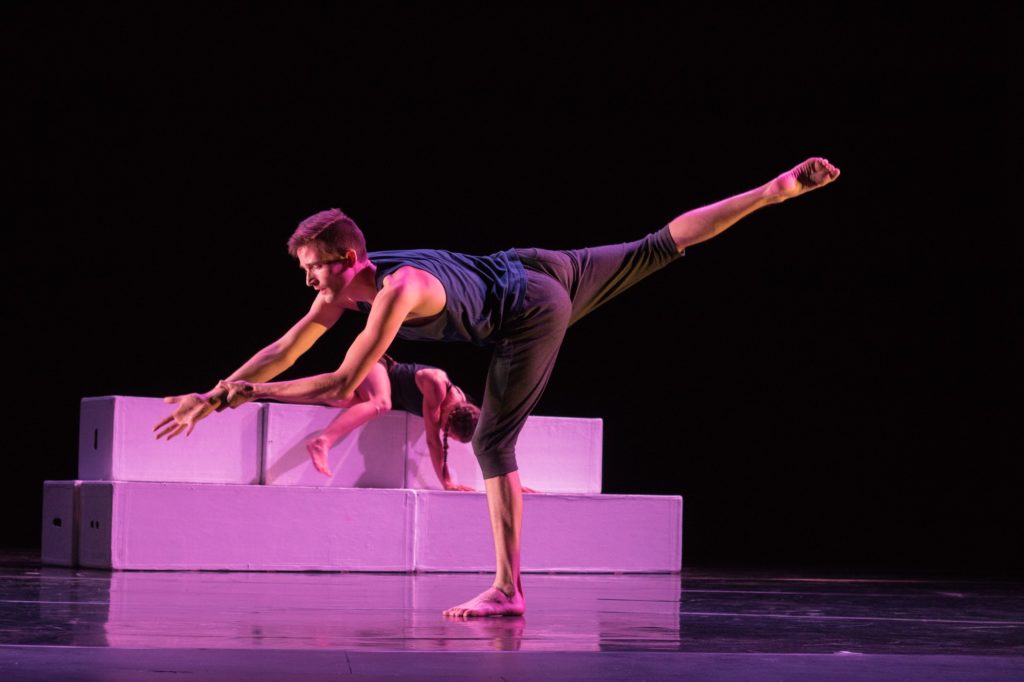
This exploration led to FORM becoming not only the name of the first section of the show, but the name of the production as a whole.
“We’re exploring line, color, texture, time, use of space. We’re not going after communicating a narrative or exhibiting a particular emotion,” Sowerby said. “We’re getting to the fundamentals of these different artistic disciplines and letting them share this space together.”
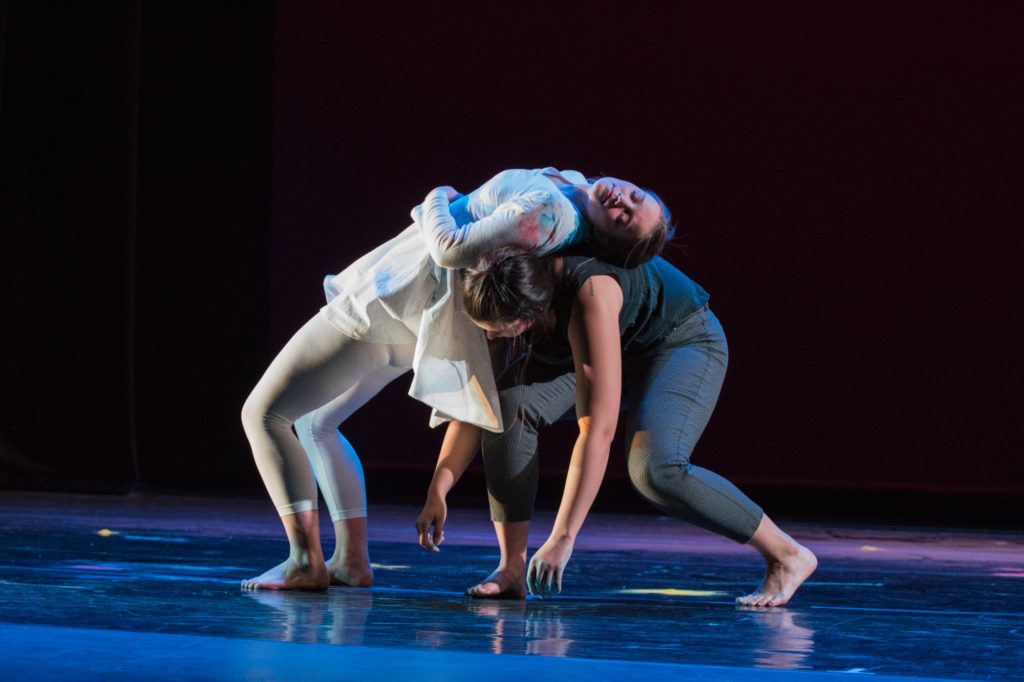
Sowerby said the fundamentals of dance are time, space and energy. Choreographers are able to play with these elements to create unique performances.
Time can be manipulated or demonstrated using a certain tempo in a performance. Space can often refer to complex choreography or something as simple as organizing bodies in shapes.
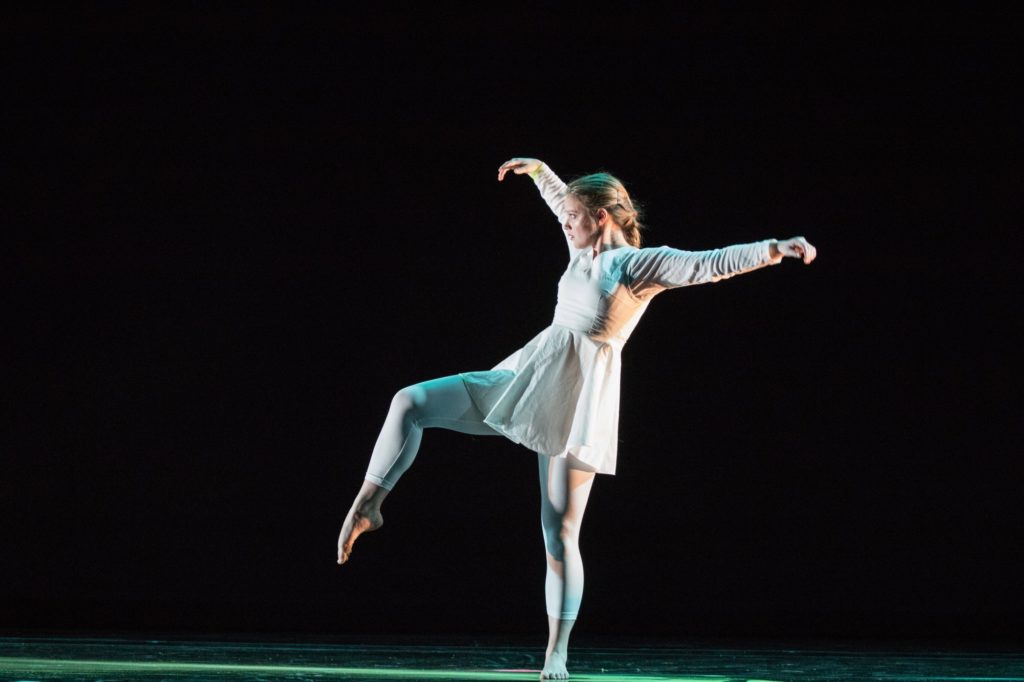
“Energy is the dynamic — the textures or qualities embedded in the movement vocabulary,” Sowerby said. “Things can be smooth, they can be sharp. There can be a sense of continuity or sustaining.”
Each of the five sections of the concert were developed and choreographed by students and faculty at WSU.
Kristen Houskeeper and Cyntera May created “We’re Not Experts, but We’re Here Anyway” and “Define Me” respectively. These are the second and third pieces of the performance.
Choreography for the show was developed as part of the students’ practicum for their bachelor’s degrees.
“Our program is a year-long course, but it’s modeled on a professional dance company,” Sowerby said. “It gives our students the opportunity to experience what it’s like to rehearse, perform, help produce, teach out in the community and do collaborative and interdisciplinary work just as they will experience in a real dance company.”
The fourth and fifth sections of the show, “Fixation” and “So, Who Moved the Exit?” were created by Emily Bokinskie, a WSU adjunct professor of dance and Michael Hamblin, a WSU professor of dance.
Stage two of the concert, titled “Resonance,” will take place in the spring.




